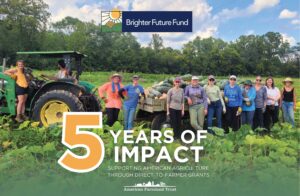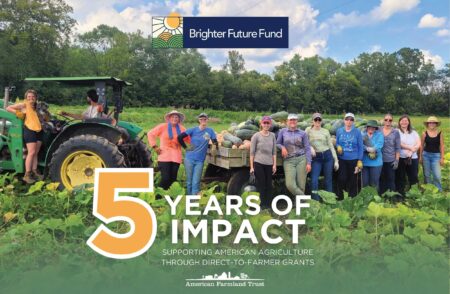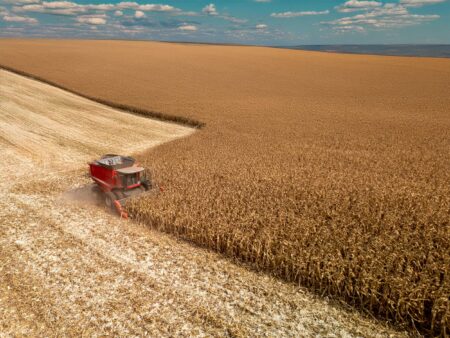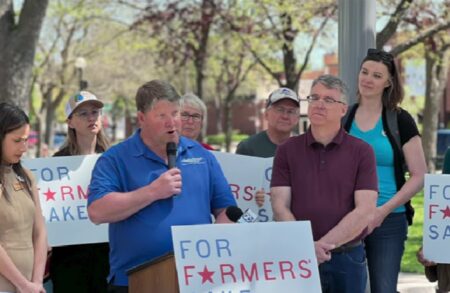October has come and gone, and harvest in the U.S. is nearing the finish line. While the USDA has yet to resume publishing its weekly crop progress reports, a Reuters poll shows U.S. soybean harvest was 91% complete and corn harvest was 83% complete as of Sunday.
To get a sense of how October unfolded in the field, we asked agronomists across the Corn Belt to sum up the month in a single word.
Variabile
Nick Groth, agronomic service representative for Syngenta Crop Protection covering the state of Wisconsin, described the corn crop progress for the month of October as variable.
“Every aspect of corn harvest has been extremely variable across the state,” said Groth. “Starting with the harvest progress, which ranges from nearly all corn being harvested in southern Wisconsin, to still more than 50% of the crop standing in northern Wisconsin.”
Yields have also been extremely variable, Groth shared.
“I have heard reports of record yields in east-central Wisconsin,” said Groth. “Throughout southern Wisconsin, yields have generally been reported at average to slightly above, but again, the yields are variable with some fields being well below average and some significantly above.”
In southern Wisconsin, Groth pointed to disease pressure to be responsible for a large portion of the yield variability.
“Fungicide applications seem to have really paid off, especially in southwest Wisconsin,” said Groth. “Northern Wisconsin yield reports are still coming in but seem to be hovering around average so far.”
He’s paying attention to grain quality, with several reports of significant mycotoxin levels in grain throughout much of the state.
“It does appear mycotoxin levels can really vary from field to field, or even within the same field,” he said.
In Minnesota, Tim Dahl, agronomic service representative for Syngenta Crop Protection also described crop progress in October as variable.
“Growers who managed their corn crop for plant health and high yields were rewarded with very good corn yields,” Dahl said.
Dahl shared that some Minnesota growers harvested the highest ever yields this year, while for others, crops were hit with excessive rains early and then suffered from severe southern rust and other plant diseases.
That same theme of variability extended south into Illinois, where Phil Krieg is an agronomic service representative for Syngenta Crop Protection.
“Yields, dry down, and harvest progress was completely variable,” said Krieg. “Good soils or early planting equaled decent yields. Poorer soils or later planting equaled bad results. However, even the good results many times were 20-30 bushels off of last year’s yields.”
Krieg saw yields below 100 bushels per acre in the thin, poorer soils.
“Lower yields were from conditions that were too wet early, followed by too hot and dry late,” he explained. “Pollination was also impacted, and every imaginable looking ear (tip back, zipper ears, barren plants) could easily be found.”
Speedy
Meaghan Anderson, Iowa State University Extension and Outreach field agronomist, described it as “speedy.”
“Most everything seemed to happen quickly this summer — rainfall came fast and often, southern rust blew up in what felt like the blink of an eye, and the crop seemed to fall off a cliff in September, maturing and drying out quickly,” Anderson said. “Even with rainfall this fall, it felt like harvest went every bit as quick as last fall in my area.”
As combines rolled throughout the state, she noticed the same variability mentioned by other agronomists.
“Corn yields were highly variable, with a combination of factors taking a major toll on yield in some fields,” Anderson said.
Tired
Jared Goplen, Wyffels Agronomy Manager in northwest Iowa, southern Minnesota, and eastern South Dakota had one word to describe October: Tired.
“The corn crop was looking a bit exhausted in most of my geography, where it was forced to fight off nitrogen deficiencies, crown and root rots, southern rust, and a smattering of other diseases this season,” said Goplen. “To top it off, we had a record-warm finish the second week of September through the first week of October. This, coupled with some very windy days, caused a lot of tops to come out and some stalk and root lodging by the end of harvest.”
He was surprised, in general, by how well the crop held together, allowing for a rapid harvest in most cases.
“The crop was probably in toughest shape in northern Iowa and parts of southern Minnesota that had the greatest amounts of rain this year,” Goplen said. “Southwest Minnesota and eastern South Dakota had much healthier plants that died more naturally. This is also the geography that had the best yields relative to normal.”












